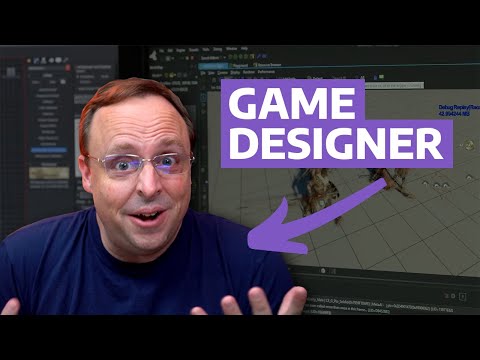Unlock Your Creativity: Game Designer Job Description and Salary
Game Designer Job Description
A Game Designer is responsible for creating and developing the concept, mechanics, and gameplay of a video game. They work closely with a team of artists, programmers, and producers to design and implement game features that provide an engaging and immersive experience for players.
The Game Designer is involved in every stage of game development, from initial brainstorming and concept design to testing and fine-tuning. They are responsible for creating detailed design documents, including game mechanics, level layouts, and character abilities. They also collaborate with the art team to create visually appealing game assets and work closely with programmers to ensure smooth implementation of gameplay features.
In addition to technical skills, a Game Designer should possess strong creativity, problem-solving abilities, and a deep understanding of player psychology. They should be able to think critically and analyze feedback from playtesters to make necessary adjustments and improvements to the game design.
Game Designer Salary
The salary of a Game Designer can vary depending on factors such as experience, company size, and location. On average, a Game Designer can earn between $50,000 and $100,000 per year. Entry-level positions may have a lower salary, while senior or lead Game Designers can earn higher salaries. Additionally, bonuses and profit-sharing opportunities may be available in some companies.
It is worth noting that the video game industry is highly competitive, and salaries can vary significantly between different companies and regions. However, with experience and a proven track record of successful game designs, Game Designers have the potential to earn higher salaries and advance in their careers.

Game Designer Job Description Template
Game Designer Job Description
A game designer is a professional responsible for creating and developing video games. They work closely with other members of the development team, including programmers, artists, and producers, to design game mechanics, gameplay systems, and overall game structure. The role of a game designer is crucial in determining the overall user experience and entertainment value of a game.
One of the important skills required for a game designer is creativity. They need to come up with innovative ideas for game concepts, characters, levels, and puzzles. They must also possess strong problem-solving skills to identify and address design issues and challenges that may arise during the development process.
Another significant aspect of being a game designer is the ability to collaborate effectively. Game designers need to work closely with other team members to ensure that the game design aligns with the vision of the project. They must communicate their ideas clearly and be open to feedback and suggestions from others. Collaboration is essential for creating a cohesive and immersive gaming experience.
In addition to creativity and collaboration, a game designer should have a strong understanding of game mechanics, player psychology, and industry trends. They need to stay updated with the latest advancements in technology and gaming platforms to create games that are engaging and enjoyable for the target audience.
In conclusion, a game designer is responsible for the conceptualization and implementation of various game elements. They must possess creativity, problem-solving skills, and the ability to collaborate effectively to create successful and entertaining video games.
Game Designer Responsibilities
Game Designer Requirements
How Much Does A Game Designer Make?
Game Designer Salary
| Job Title | Salary |
|---|---|
| Junior Game Designer | $50,000 – $70,000 |
| Game Designer | $70,000 – $90,000 |
| Senior Game Designer | $90,000 – $120,000 |
| Lead Game Designer | $120,000 – $150,000 |
A game designer is a professional who is responsible for creating and designing the gameplay experience in video games. They work closely with other members of the development team, such as programmers and artists, to bring the game’s vision to life. The salary of a game designer varies depending on factors such as experience, expertise, and the size of the company. Junior game designers can expect to earn around $50,000 to $70,000 per year, while more experienced professionals like senior or lead game designers can earn upwards of $120,000 per year. It’s important to note that these figures are just estimates and can vary based on location and other factors.
Game Designer Salaries by Country
Top Paying Countries for Game Designer
| Country | Average Salary (USD) |
|---|---|
| United States | 100,000 |
| Australia | 85,000 |
| Canada | 80,000 |
| United Kingdom | 75,000 |
| Germany | 70,000 |
According to recent data, the top paying countries for game designers are the United States, Australia, Canada, United Kingdom, and Germany. In the United States, game designers earn an average salary of $100,000 per year, making it the highest paying country for this profession. Australia follows closely with an average salary of $85,000, while Canada offers an average salary of $80,000. The United Kingdom and Germany also provide competitive salaries for game designers, with average annual earnings of $75,000 and $70,000 respectively. These countries not only offer attractive remuneration but also boast thriving game development industries, making them ideal destinations for aspiring game designers.
A video on the topic Game Designer
Interview Questions for Game Designer
1. What inspired you to become a game designer?
I have always been passionate about both video games and storytelling. Combining these two interests, I realized that game design is the perfect career for me. I am constantly inspired by the immersive worlds and captivating narratives that games can create, and I wanted to be a part of that creative process.
2. How do you approach designing a new game concept?
When designing a new game concept, I start by brainstorming ideas and researching current trends in the gaming industry. I then create a design document outlining the core mechanics, gameplay features, art style, and target audience. I also collaborate with a team of artists, programmers, and other designers to ensure that our vision aligns and that we can create a cohesive and engaging experience for players.
3. What is the most challenging aspect of game design?
One of the most challenging aspects of game design is finding the right balance between difficulty and enjoyment. It is important to create a game that is challenging enough to keep players engaged, but not so difficult that it becomes frustrating. Achieving this balance requires extensive playtesting and iterating on the game mechanics to ensure that it provides a satisfying and rewarding experience for players.
4. How do you incorporate player feedback into your game design process?
Player feedback is crucial in improving the overall quality of a game. I actively seek feedback from playtesters and the gaming community through surveys, focus groups, and online forums. I carefully analyze the feedback received and identify any common patterns or issues. I then use this information to make informed design decisions and iterate on the game to address any concerns and enhance the player experience.
5. How do you stay up-to-date with the latest gaming trends and technologies?
To stay up-to-date with the latest gaming trends and technologies, I regularly attend industry conferences, read industry publications, and follow influential game designers and developers on social media. I also participate in online forums and engage in discussions with other professionals in the gaming industry. This helps me stay informed about emerging technologies, design techniques, and player preferences.
6. Can you describe a project that you are particularly proud of?
One project that I am particularly proud of is a mobile puzzle game that I designed. It was a challenging endeavor as I had to create unique and engaging puzzles that progressively increased in difficulty. I also had to consider the limitations of mobile devices and ensure that the game was optimized for a touch-screen interface. The positive feedback and high user ratings that the game received made me proud of the effort and creativity that went into its design.
7. How do you handle creative differences within a team?
Creative differences are inevitable in a team environment, but it is important to approach them with open-mindedness and respect. I believe in fostering a collaborative and inclusive work culture where everyone’s ideas are valued. When faced with creative differences, I encourage open discussions and brainstorming sessions to find common ground and explore alternative solutions. Ultimately, the goal is to create the best possible game, and I believe that diverse perspectives and constructive debates can lead to innovative and compelling designs.
8. How do you ensure that your game designs are accessible to a wide range of players?
To ensure that my game designs are accessible to a wide range of players, I prioritize inclusive design principles. This involves considering factors such as colorblindness, hearing impairments, and mobility limitations during the design process. I also conduct user tests with diverse groups of players to identify any accessibility barriers and make necessary adjustments. By incorporating accessibility features and addressing potential limitations, I strive to create games that can be enjoyed by as many people as possible.
9. What do you think is the key to creating a successful multiplayer game?
The key to creating a successful multiplayer game is to prioritize player engagement and social interaction. A multiplayer game should provide opportunities for players to collaborate, compete, and communicate with each other. Building a strong community around the game is also crucial, as it fosters a sense of belonging and encourages players to keep coming back. Regular updates, new content, and responsive customer support are also important factors in maintaining a successful multiplayer game.
10. How do you approach balancing gameplay and monetization in free-to-play games?
Balancing gameplay and monetization in free-to-play games is a delicate process. It is important to offer a fair and enjoyable experience for players without compromising the game’s revenue potential. I approach this by designing gameplay systems that allow players to progress and succeed without feeling forced to make purchases. I also carefully consider the value of in-game purchases and ensure that they provide meaningful benefits or cosmetic enhancements. Transparency and clear communication with players about monetization strategies are also essential to maintain player trust and satisfaction.






